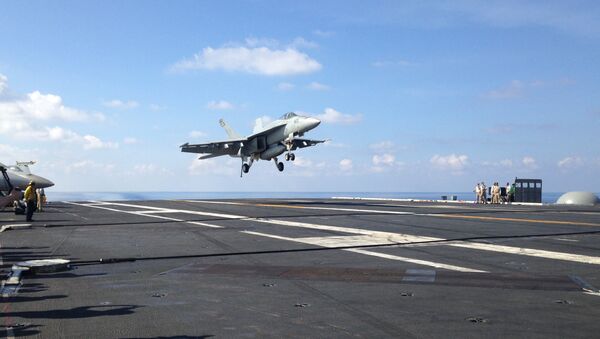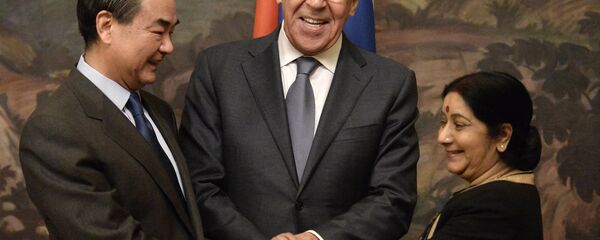The Western media's narrative about China's "aggressive" posture in the South China Sea is not only exaggerated but is completely divorced from reality.
"The South China Sea has been described in numerous western publications as the latest potential 'flashpoint' in the world's geopolitical scene. The rhetoric is particularly heated and ill-informed in about equal proportions, focusing on alleged 'aggression' by the People's Republic of China ('China') in laying claim to a large expanse of water in the South China Sea well beyond its territorial limit (12 nautical miles) or any exclusive economic zone (200 nautical miles) recognized in international law," James O'Neill, an Australian-based Barrister at Law writes in his article for New Eastern Outlook.
According to the CFR, China's claims "threaten sea lines of communication, which are important maritime passages that facilitate trade and the movement of naval forces."
In its turn, the United States "maintains important interests in ensuring freedom of navigation and securing sea lines of communication" and "has a role in preventing military escalation resulting from the territorial dispute," the think tank states.
But what is really going on in the region? What do US analysts and thought leaders prefer not to focus on?
First of all, it is not only China who is busy with building artificial islands and deploying its naval forces in the region.
The Spratlys — a grouping of 230 islands, reefs and cays — have long been the focus of worldwide attention. However, it remains largely unspoken that "of the six countries claiming an interest in the Spratlys, only Brunei has failed to construct structures, mostly on stilts, on more than 40 of these islets and reefs," O'Neill writes.
On the other hand, Western media remains mute about Taiwan's military expansion and construction of artificial islands in the region. However, the Taiwanese maintain a substantial military presence on Taiping Island of the Spratly Group as well as on Tungsha Island.
Furthermore, in the beginning of 2008 Taiwan built a 2,000-meter-long airstrip on Taiping Island. Surprisingly, although the country's maritime facilities were built outside any claimed Taiwanese exclusive economic zone, neither the United States nor Australia expressed any concerns over the matter.
At the same time, according to O'Neill, it is nonsensical to accuse China of violating the freedom of navigation in the South China Sea.
"The biggest potential loser in any blocking of trade activity is the PRC itself. It makes absolutely no sense for the PRC to engage in any behavior so manifestly contrary to its own economic or political interests," the lawyer emphasizes.
Much in the same manner the Sino-Philippines 2014 agreement over a grouping of rocks in the South China Sea was sabotaged by Washington, the lawyer narrates.
By meddling into the region's internal affairs, the US is only adding fuel to the fire, Beijing believes. According to China, there is no need to internationalize the problem, as it can be solved efficiently by the parties concerned.
This stance is shared by Beijing's BRICS allies, Russia and India. The latest trilateral communiqué signed by foreign ministers of Russia, China and India states that "all [South China Sea] related disputes should be addressed through negotiations and agreements between the parties concerned."
According to Ankit Panda, The Diplomat's editor, this move clearly indicates that Beijing has received not only Russia's support, but it also now has India on its side, although "since 2013, New Delhi's language on the South China Sea has matched that of the United Sates, Vietnam, the Philippines, Australia and Japan."
However sophisticated the Western propaganda campaign against Beijing is, the analysis of the issue indicates that Beijing is by no means the region's troublemaker. Moreover, it is the source of development and potential prosperity for its neighbors: the China-led New Silk Road project is supposed to facilitate the region's economic growth.





